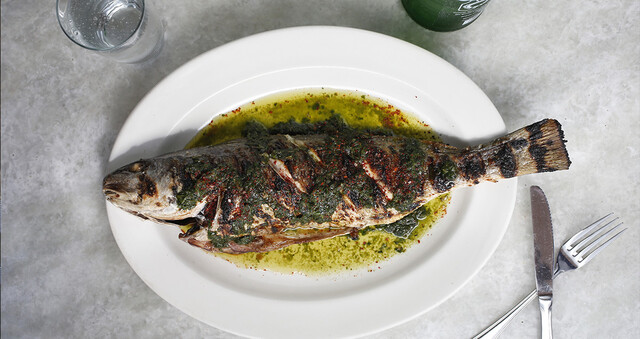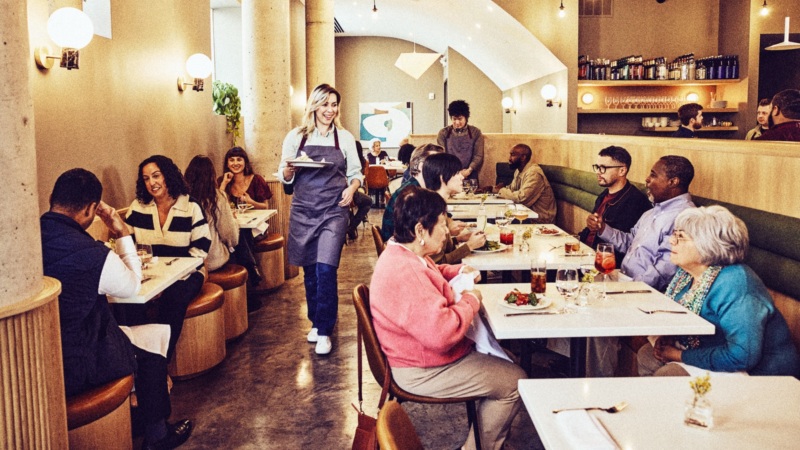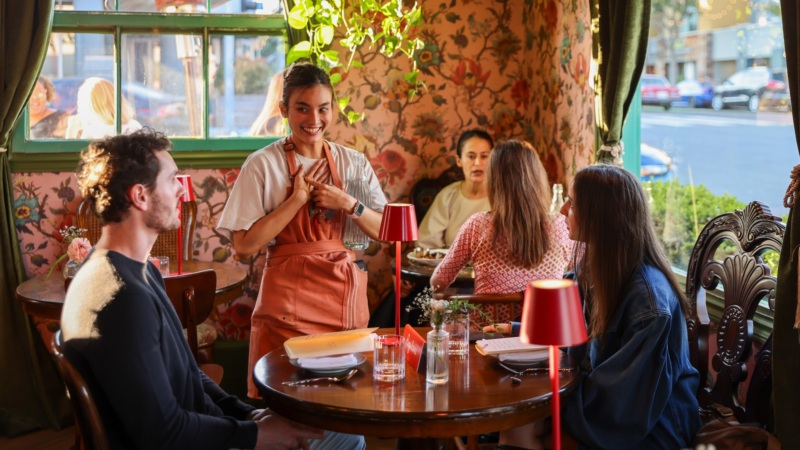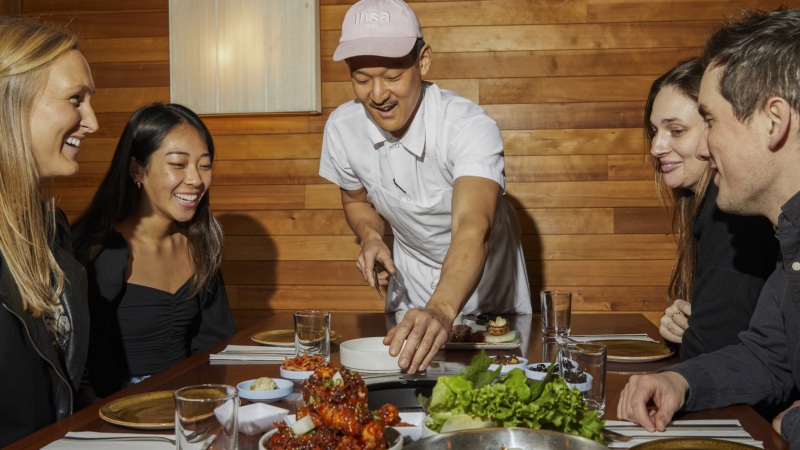
The State of the Restaurant Industry. The State of Resy.
Published:
And why, as Resy turns 10, I am more optimistic than ever about both.
The state of the restaurant industry is, well, complicated. Over the last decade, restaurants have been through a lot, but as I take a moment to reflect on Resy’s 10th anniversary, I am more optimistic than ever.
A decade ago, Resy was born in Soho. It was a tech startup with ambitions to reshape the restaurant reservation landscape with a simple guiding principle: By restaurants, for restaurants. Resy would power the world’s best restaurants, using technology to champion the future of hospitality, and be an ally to the industry. A decade later, that foundation has not changed – but the restaurant landscape has changed drastically.
Looking back, 2014 was a pivotal moment in the restaurant world. Dining started to become part of popular culture. New shows like “Chef’s Table” and “Top Chef” centered around chefs, an evolution from the home cooking era. Mainstream audiences were not only open to more global approaches to cooking, but actively seeking them out.
Bon Appetit declared 2014’s best new restaurant in America to be Rose’s Luxury, the D.C. restaurant that was (and remains) at the forefront of reimagining what special occasion dining can be. “Best” no longer only meant a traditional fine dining experience. More accessible dining could be ambitious and a new class of talented chefs were opening trendsetting restaurants proving that.
Down in New Orleans, Pêche, was racking up acclaim for the way it blended the cooking of South America, Spain, and the Gulf Coast to create a place that was distinctly New Orleans. A few blocks away, chef Nina Compton was building her groundbreaking Compère Lapin, where she brought her Caribbean influences to the fine dining realm. These restaurants showed us how restaurants can be a platform for championing their city – and their city’s many cultures.
The digital boom had come to the dining industry and restaurants needed a technology partner that was in their corner, and Resy was ready for it. It was clear that restaurants needed a gateway to diners, a platform not only to take reservations, but to connect them to loyal diners, drive demand (aka, butts in seats!), streamline operations, share insights about diner behavior, increase margins, make running service easier, and more, all in one place, so they could focus on what they do best: taking care of people.
Rosemary’s, a neighborhood restaurant in New York’s West Village, was one of the first restaurants to go live on Resy on June 8, 2014. Along with Rubirosa, Charlie Bird, Balthazar, Claudette and other early adopters, we’re proud that they’re still on Resy today.
As the industry embraced its new, digital future, Resy continued to build and listen to restaurants. They told us they needed help managing wait lists, and they wondered how to better capitalize on their high demand. How could we leverage technology to capture and redistribute that demand, while building consumer interest in dining?
Enter Notify. In 2015, Resy launched Notify, a first for the industry. When Lilia and Pasquale Jones opened in 2016 and quickly became the hottest reservations in town, a new behavior was born: digitally queuing for a “Hot Table Alert.” Today, “Set a Notify” or “I got Notified” is nomenclature for any restaurant enthusiast.
More change hit the industry, this time fueled by the rise in social media. Soon, influencers could pack a restaurant’s dining room with a single post, and as media, algorithms, and SEO evolved, discovery and curation became an essential part of success, so we built a marketing engine designed to drive diners to the perfect restaurant for any occasion.
With the powerful backing of American Express (which acquired Resy in 2019) and its history of championing small businesses, Resy could give small restaurants big exposure through global marketing campaigns and programs like Global Dining Access designed to provide access to dining lovers, but also importantly, to send restaurants some of the best diners.
Then the pandemic hit. It was a generational storm and restaurants needed a voice, so we amplified their operators, created takeout guides, and educated the public on what we lose if we lose restaurants. Restaurants needed a financial lifeline once they reopened, so we were the first to provide fee relief to every restaurant that wanted to use the Resy platform. Along with Amex, we also offered incentives to dine, supporting restaurants and everyone involved in them.
Dining became an opportunity to reconnect with the world. We worked together, supported each other, and emerged a more united, sustainable industry. Every time I dine out, I see signs of an industry that is in the midst of a beautiful evolution. I see how…
- Tatiana has upended the fine dining world by creating a three-star destination serving up Kwame Onwuachi’s vision of Afro-Caribbean food in the middle of Lincoln Center.
- Baroo has proven how a humble pop-up restaurant can think outside the box to create deliciousness in ways that defy categorization, flourishing to become the restaurant of the year in Los Angeles.
- Los Felix in Miami can prioritize environmental and sustainability efforts while creating memorable dining experiences, holding both a Michelin star and a Green Star at once.
- Institutions and staples like Suraya in Philadelphia, Kimball House in Atlanta, and Rustic Canyon in Los Angeles have taught us how much neighborhood restaurants matter and define communities.
- Even bakeries, like Caracas Bakery in Miami, where I live, are pushing boundaries! Being from Venezuela, this place transports me home every time I have one of their truly delicious pastries.
- Larger operators like Daniel Boulud, Stephen Starr, and Mario Carbone and the Major Food Group have built for scale while skillfully maintaining their core hospitality values.
- And how the late Jamal James Kent left behind a legacy of building toward a better industry, how he invested in being a pillar of a neighborhood, and how he showed us all what it means to be a leader, in the truest sense of the word.
So what’s next? A lot of that is up to all of us who love dining, restaurants and the communities they support. Today, Resy is More Than Reservations and we will continue to invest in the restaurant industry. This means we will:
- Support restaurants’ ambitions and their ideas to ‘wow’ diners. We deeply believe in the magic of restaurants, and that dining experiences are more than just reservations. Our recent collaboration with Unapologetic Foods’ was a cross-country tour that spread their gospel of uncompromising cooking to new cities and audiences, and Resy powered it.
- Tell restaurants’ stories. We will use our platform and rich storytelling to connect diners with restaurants.
- Give restaurants the digital tools they need to succeed. Recently, we announced plans to acquire Tock and Rooam, and we look forward to coming together with those teams to build an even more exceptional technology platform to help power restaurants after the deals close.
- Continue to fill restaurants with the best diners. We know that Amex Card Members spend more – in 2023, annual spend of American Express Card Members was, on average, 2.9X that of non-Card Members1. We’ll continue to grow the dining programs we offer with Amex membership, like Global Dining Access and Resy Credits on Amex cards which drives diners to restaurants (on us!).
- Back restaurants that are redefining the industry. I see places like Val Chang’s Miami restaurant Maty’s, which is one of my personal favorites, and Genie Kwon and Tim Flores’ Chicago restaurant Kasama, racking up national awards and being added to everyone’s list (if they are not on yours, they should be). Speaking for all of us at Resy, it’s inspiring, and we feel honored to support these game changers as they rise to success, accomplish their dreams, and put their mark on this wonderful industry and its evolution.
We are proud to be part of this vibrant restaurant community, and in the next 10 years, we’ll double down on our day one mantra. Cheers to another decade of dining with all of you.

- Disclosure: Nilson Report #1,257, February 2024. Spend per card derived from U.S. year-end purchase volume divided by year-end cards in force (CIF), not from individual consumer-level data. CIF represents the number of cards issued and outstanding with cardholders. Average Non-American Express spend per card includes Visa, MasterCard and Discover credit and charge card volume and CIF and excludes debit and prepaid volume and CIF.
*Opinions and views in articles shared on Resy OS are presented for the purpose of discussion and commentary on topics of interest in the restaurant industry; they should not be viewed as substitutes for advice given by professionally engaged business consultants and advisors.



















